A couple of summers ago in Northern Italy, I suddenly realized that the Leaning Tower of Pisa was far from unique—we were seeing them everywhere, but Pisa obviously had the best publicity agent. Just about everyone in the world knows it, and knows jokes based on it (Leaning Tower to Big Ben: “If you’ve got the time, I’ve got the inclination.") And, there are hundreds of restaurants calling themselves “Leaning Tower of Pizza.”
Actually, leaning towers should be no big surprise: so many of Northern Italy’s cities are built in formerly marshy areas or along the coast, where subsiding soil and soggy circumstances make it almost a miracle not to lean a bit over a few centuries.
Of course, some are built leaning on purpose, but that's not what we're talking about, things like this Capital Gate building in Abu Dhabi, claimed to be the "most-leaning" building ever, or the Olympic Tower in Montreal (built, it is said, because Montreal's mayor failed in his bid to "borrow" the Eiffel Tower).
But as I started to look through my pictures, and to collect others for this blog, I came to realize there are far more and in far more places than most people think. In fact, you could make quite a trip just by planning to visit these tortured towers—if you have a bent for it.
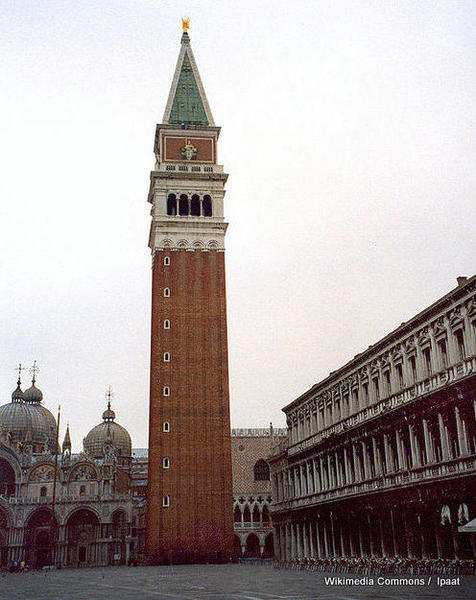 Sometimes, a tower may do more than lean, as in the case of the Campanile in Piazza San Marco in Venice. The famous tower, with parts dating to the 9th century, has had to be repaired many times after fire and earthquake damage--and then completely rebuilt after it collapsed completely in 1902.The picture below is from a few days later.
Sometimes, a tower may do more than lean, as in the case of the Campanile in Piazza San Marco in Venice. The famous tower, with parts dating to the 9th century, has had to be repaired many times after fire and earthquake damage--and then completely rebuilt after it collapsed completely in 1902.The picture below is from a few days later.
If you find my selection below not enough, Wikipedia even has a list of leaning towers for you to start from. Have fun, if you’re so inclined!
This tower, at the San Nicola church in Pisa (yes, they have two leaning towers!) hides the extent of its tilt by surrounding itself with later buildings, but the base has subsided into the ground, one side 150 cm deeper than the other.
There's no mistaking the tilt here at the church of San Martino on the island of Burano, in the Venetian lagoon.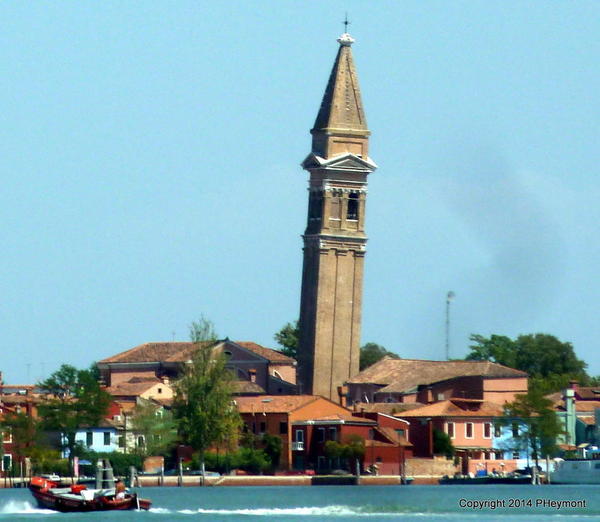
Still in Northern Italy we can take a look at the church of Sant'Apolinaire in Ravenna, better known for its gorgeous Byzantine mosaics, but...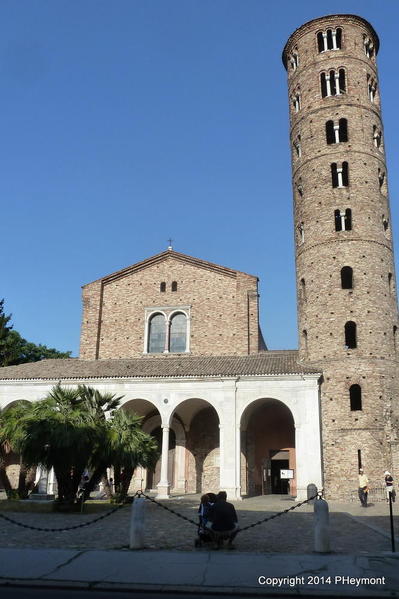
Bologna's most famous civic symbol is not one, but two towers, both leaning over in relation to the ground, and in relation to each other. They are the two survivors of what once were hundreds of towers built by wealthy families for prestige and protection in the 12th and 13th centuries especially. The taller of these two, called the Asinelli, would have originally been the shorter--but the leaning of the neighboring Garisenda became so obvious during construction that the upper part was removed and construction was never finished.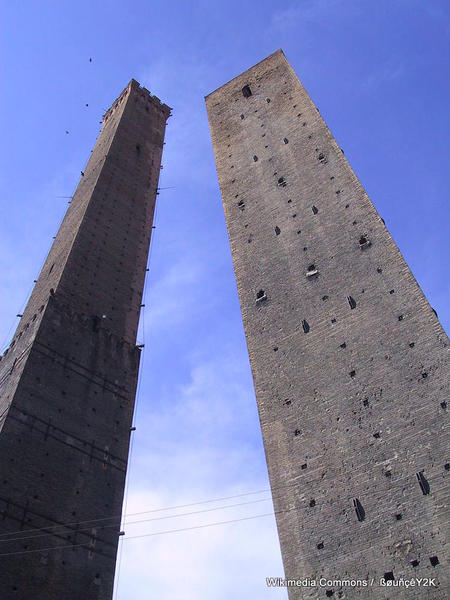
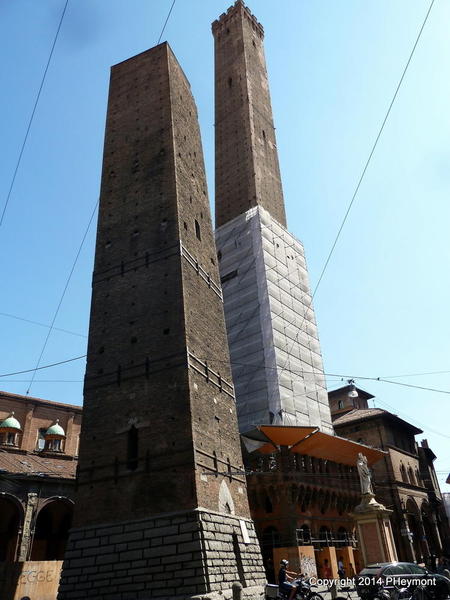
One more for Italy, right in the heart of Rome: The Militia Tower (Torre del Milizie), adjoining the Church of Santa Caterina. It was once a bit taller.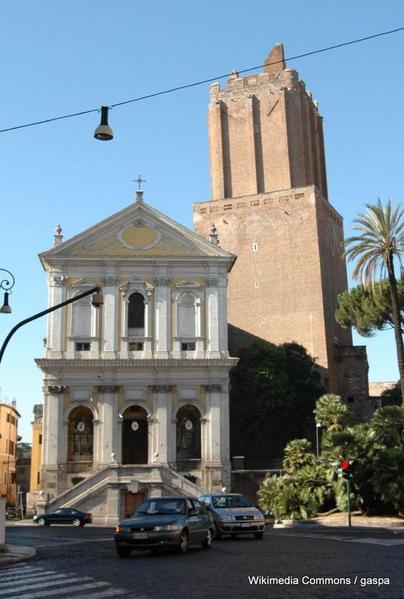
Not all the accidentally-leaning towers go back that many centuries. Here's one of the more recent ones, the Tower of Nevyansk, in Russia. Built around 1725 by the family of an early Russian industrialist and associate of Peter the Great, its purpose has been debated. It appears to have combined some office space, an experimental laboratory, some metal-refining operations and "some sort of 'secret work' with the help of shackled serfs."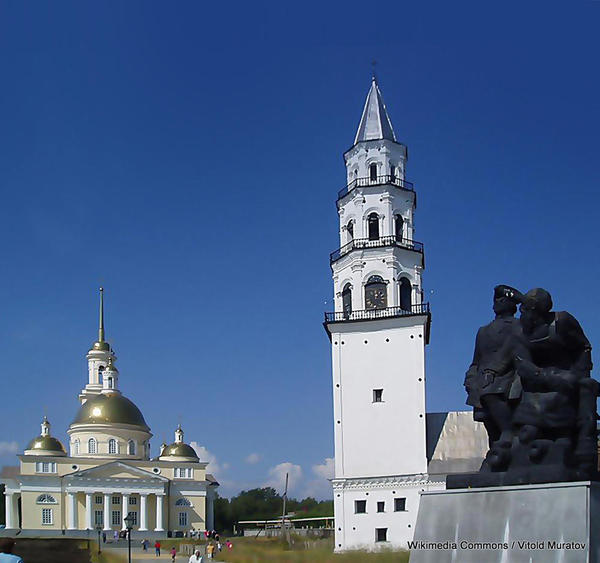
As you might expect, the Netherlands, another country with low-lying and marshy soil, also has a few leaning towers, and had a few that are now gone. One of the best-known is the Oude Kerk (Old Church) in Delft. The tower was built about 1325; by the 16th century it was already leaning enough that when more decorative turrets were added, they were aligned with the vertical rather than with the tower, giving a slightly kinked look that 's most visible on the left side in this picture.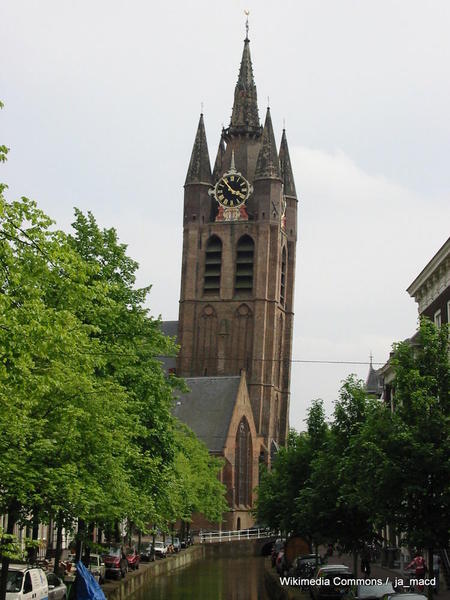
The Dutch town of Leeuwarden, which still has a rather blocky slightly-leaning tower that also shows signs of attempts at correction; look at the small arched windows set into the bricked-in arches in the picture below, and you'll see that they were set in perpendicular to the ground, not parallel to the tower! Other indications can be seen in other parts of the masonry.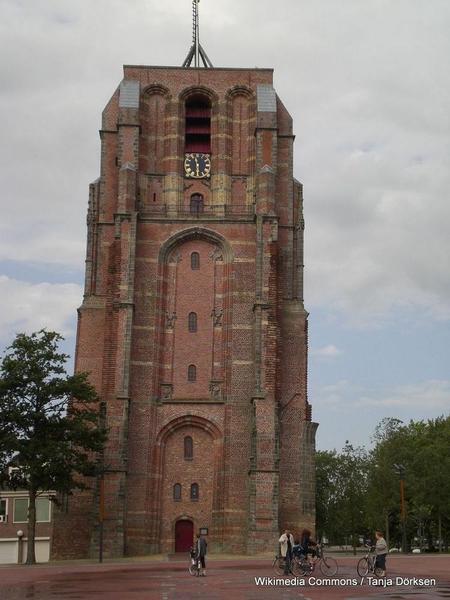
Leeuwarden (which has been selected as a European Capital of Culture for 2018—you read it here first—used to have an even taller, even more leaning, tower, but in the 1880s it was removed because of fears for its stability. Which is perhaps understandable when you look at the size compared to the surroundings.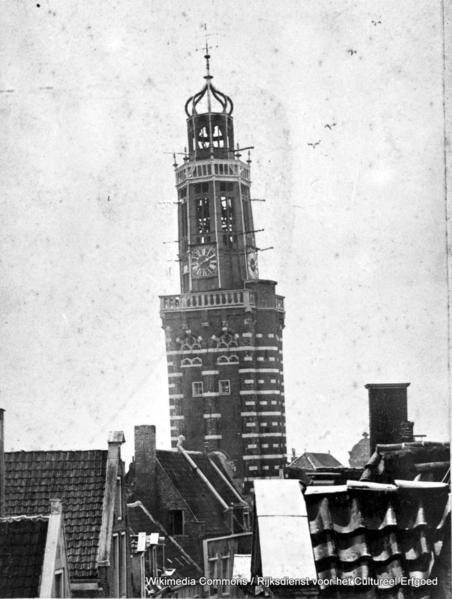
A similar fate overtook the Tower of Zaragoza, in Spain, long the city's symbol. Despite a desperate campaign to save it, it was torn down in 1892, and its bricks sold for new buildings. Some, at the time, charged that greedy councilors and builders were behind the decision.
Nostalgia for the tower did not go away, and today, its former location is marked by this touching statue of a small boy in Plaza de San Felipe, looking up at where he would have seen the tower had it not been destroyed.
This German church, in Suurhusen, East Friesia, is not in danger of a bad end...but it has been necessry to bend the rest of the roof to keep up with the tilting tower. The tower didn't even start its lean until the mid-19th century, when it was already 500 years old. Modern improvements drained the marshy soil, exposing underground support timbers to rot. By 1975, the tower had to be closed for repair, but re-opened 10 years later.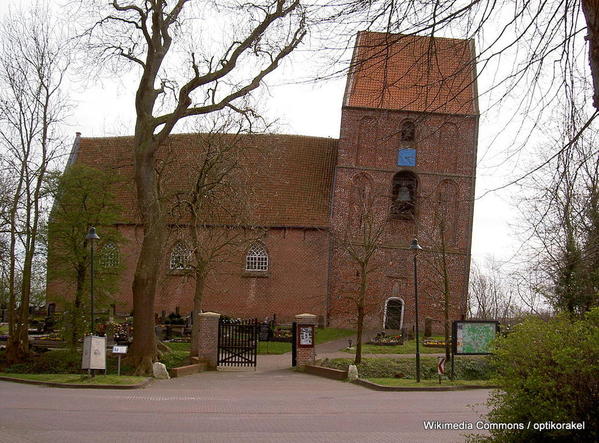
Stepping away from Europe for a moment, here's the Tiger Hill Pagoda, in Suzhou, China. Built around 960 AD, it's 154 feet high and leans by a bit more than 3 feet. The shift has been increasing since it was built, because half the foundation is on rock and the other half on soil. Recent work pumping concrete into the soil has slowed the process.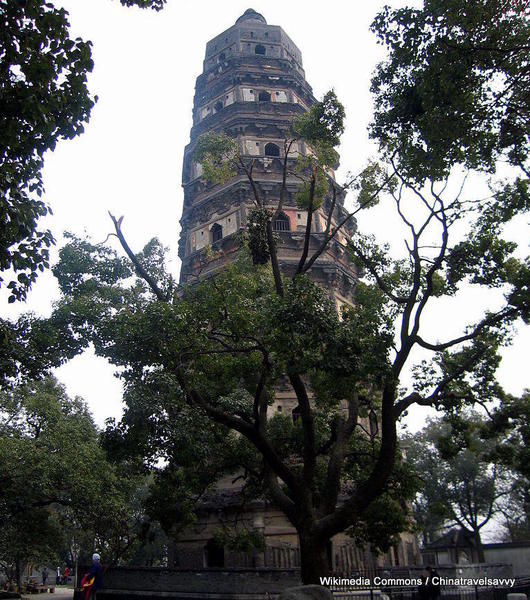
As noted above, sometimes the tilt is not easy to see (Big Ben in London really DOES share an inclination with the Tower of Pisa, but only leans out by 17"). However, this church, in Chesterfield, England, hides nothing but the true story of how it happened. No, it has nothing to do with Harry Potter. Among the racier stories is a legend that when a virgin was married there, the church turned to look—and is waiting for another to straighten up. A long-held belief was that unseasoned wood used in the construction twisted as it dried, but in recent years it's been shown that the tower was straight for its first 300 years.
The current best bet is that lead tiles used on the roof and in the fitting for the cross that was added in 1662 caused the twist, in part because they were a 33-ton unplanned load on the oak framework, and in part because daily uneven heating by the sun caused expansion and contraction to add to the twist.
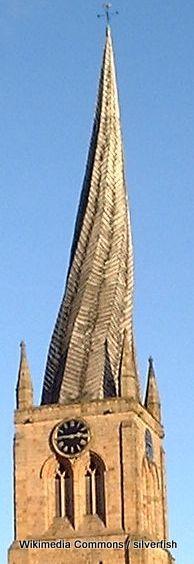
And here's my last for now (but please add more in comments!) The Sharps Island Light, in Chesapeake Bay. The first lighthouse on this location was built in 1838, and destroyed by a storm; its replacement met a similar fate. This one was built in 1883 and continued in active service until 2010, despite the 1977 storm that pushed it over to a 15-degree angle (since increased to 20 degrees). It's been sold to a private company which has not announced any plans.
By the way...since you were about to ask...no, it's not floating. It has a solid foundation and was originally built on land. But over the years, wind and waves had their way, and while the lighthouse remains, there is no longer a Sharps Island!
Left: 2009; Right: 1885

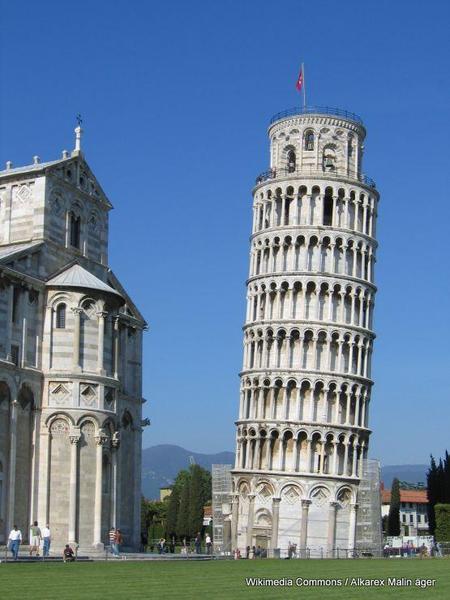
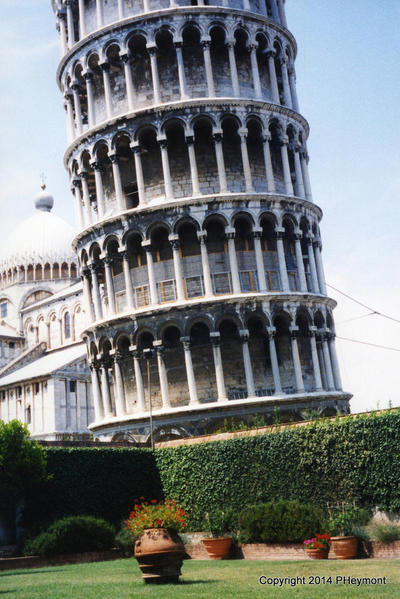
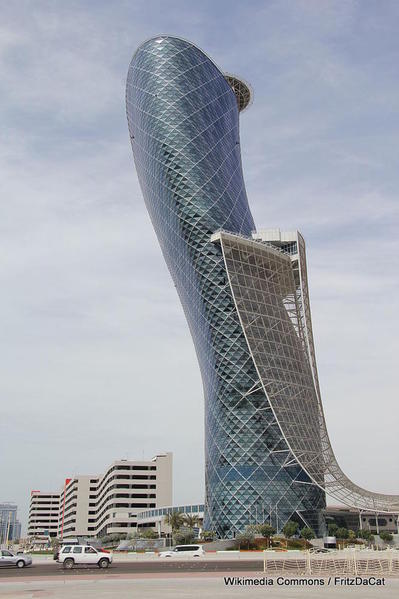
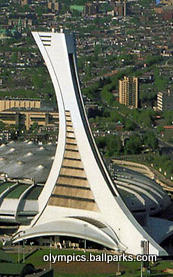
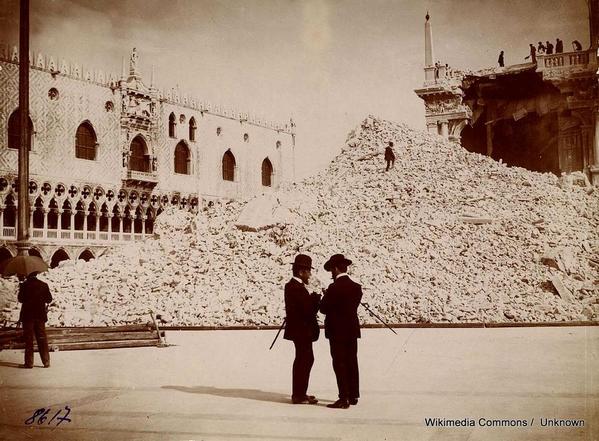
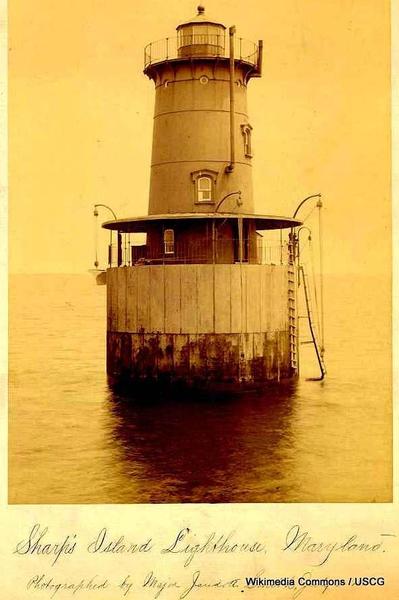

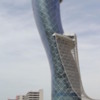
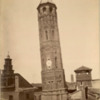

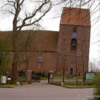

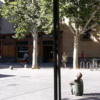




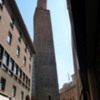


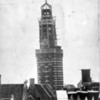



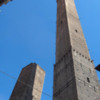

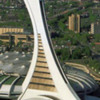




Comments (4)